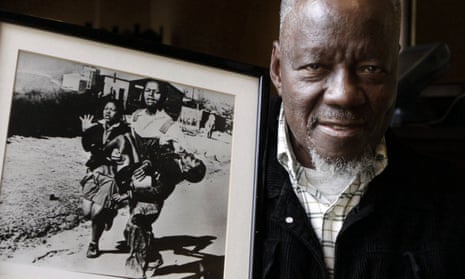The South African photographer who captured the famous black-and-white picture of a dying 13-year-old activist shot by apartheid police during the 1976 Soweto uprising has died.
Sam Nzima died aged 83 in hospital on Saturday in the country’s Mpumalanga province, the presidency said on Sunday.
His photograph of a dying Hector Pieterson being carried away by a distraught fellow student after security forces opened fire on young people protesting in Soweto township on 16 June 1976 turned the world’s attention to the brutality of the apartheid regime.
Those riots, led by high school students, became a watershed in South Africa’s anti-apartheid struggle. Over three days, at least 170 people were killed, with some estimates putting the death toll at several hundred over the following month.
Protests spread across South Africa and a new era of black activism emerged that eventually led to the fall of the apartheid regime and Nelson Mandela’s election as president in 1994.
President Cyril Ramaphosa paid tribute to the self-taught photographer, who was placed under house arrest for 19 months after the image was published.
“Mr Sam Nzima was one of a kind,” said Ramaphosa. “His camera captured the full brutality of apartheid oppression on the nation’s psyche and history.”
“We will especially remember his iconic photograph of a dying young Hector Pieterson, which became a symbol of resistance against the imposition of Afrikaans as a medium of instruction in the black schools,” said Ramaphosa in a statement.
Nzima’s photograph was listed by Time magazine as one of 100 most influential images of all time. After a legal battle, he won the copyright to the image.
The ruling African National Congress said Nzima’s “emotive iconic (picture) ... became a historical landmark feature that forever defined how the 16 June 1976 narrative was told”.








